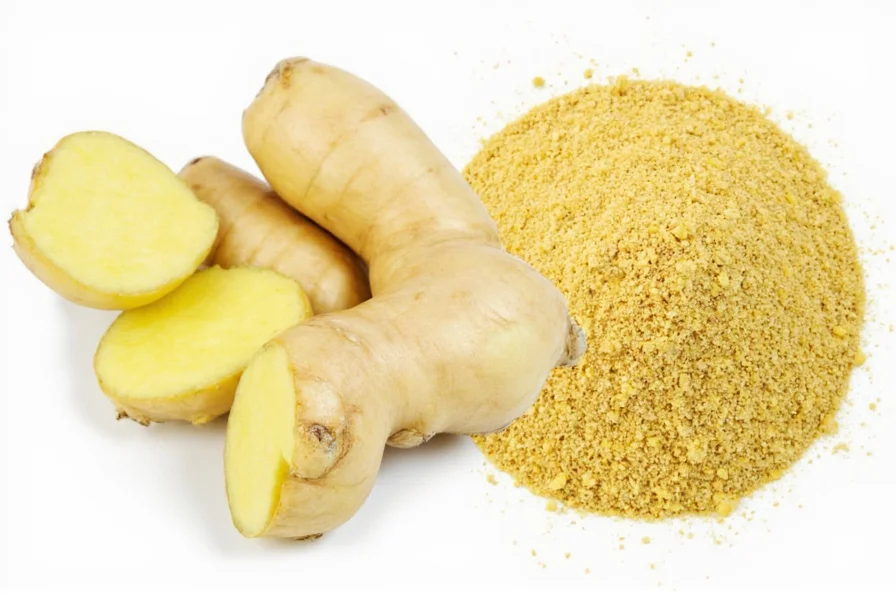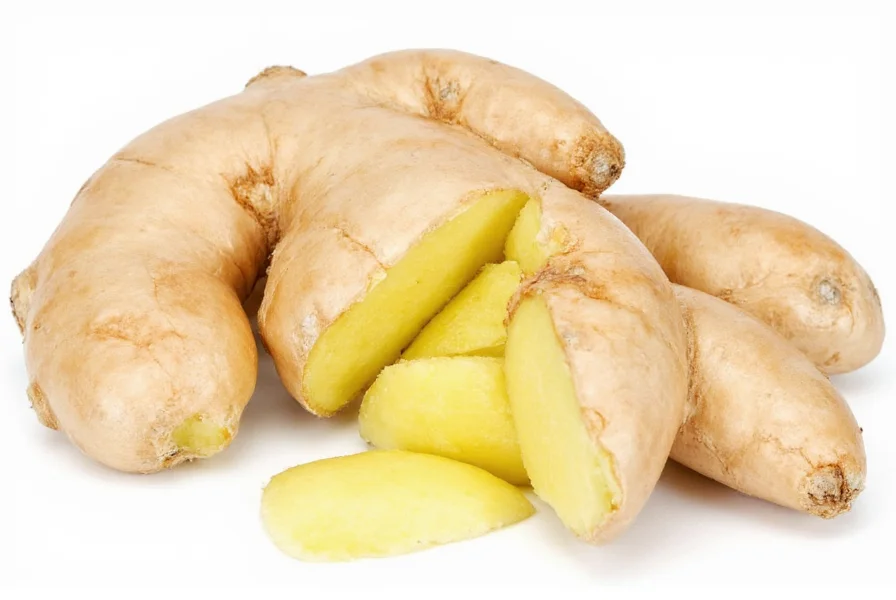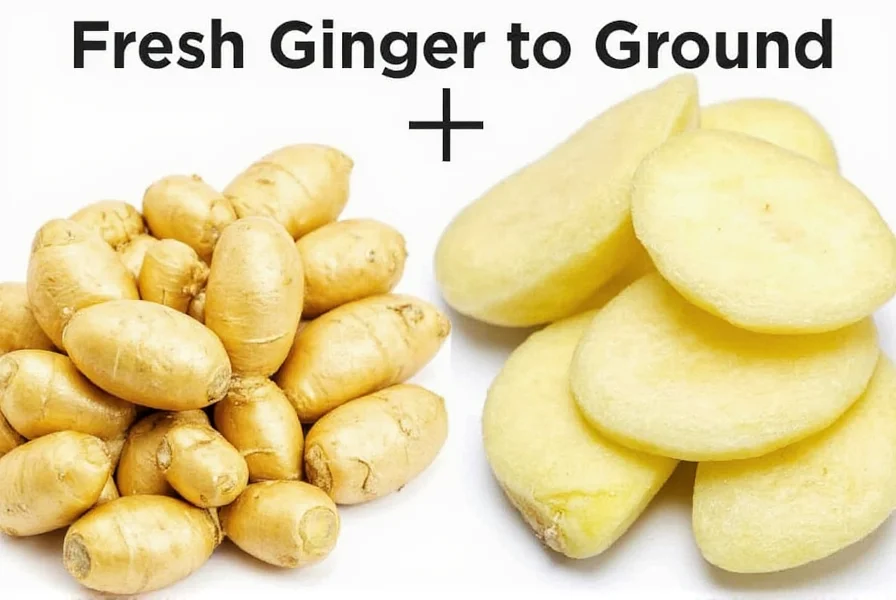Converting fresh ginger to ground ginger at home offers superior flavor and potency compared to store-bought alternatives. Many home cooks and professional chefs prefer making their own ground ginger to ensure maximum freshness and avoid additives commonly found in commercial products. This comprehensive guide explains the proper technique, conversion ratios, and storage methods for transforming fresh ginger root into high-quality ground ginger.
Why Convert Fresh Ginger to Ground Form
Fresh ginger contains up to 20% more gingerol—the compound responsible for ginger's distinctive flavor and health benefits—than pre-ground ginger. When you grind your own ginger from fresh root, you preserve these valuable compounds that degrade over time in commercially processed products. Understanding how to properly convert fresh ginger to ground ginger ensures you maintain maximum flavor intensity and nutritional value in your culinary creations.
Step-by-Step Conversion Process
Transforming fresh ginger to ground ginger requires careful preparation to achieve the best results. Follow these professional techniques for optimal flavor retention:
- Selection: Choose firm, plump ginger roots with smooth skin and no wrinkles
- Preparation: Peel the ginger using a spoon to minimize waste
- Drying: Slice ginger thinly and dehydrate at 135°F (57°C) for 8-12 hours
- Grinding: Process dried ginger in small batches using a spice grinder
- Sieving: Pass through a fine mesh strainer to remove fibrous particles
- Storage: Transfer to an airtight container away from light and moisture
| Fresh Ginger Amount | Equivalent Ground Ginger | Best For |
|---|---|---|
| 1 inch piece (18g) | 1 teaspoon | Baking recipes|
| 1/4 cup grated | 3/4 teaspoon | Sauces and marinades|
| 1 cup grated | 3 tablespoons | Large batch cooking
Optimal Fresh Ginger Selection for Grinding
Not all ginger roots are equally suitable for conversion to ground form. For the best results when grinding fresh ginger to powder, select roots with these characteristics:
- Maturity: Medium-aged roots (neither too young nor too old) contain optimal gingerol levels
- Texture: Firm, dense roots produce finer powder with better flavor concentration
- Moisture content: Roots with moderate moisture dry more evenly for consistent grinding
- Harvest time: Fall-harvested ginger typically has higher essential oil content
Avoid roots with soft spots, mold, or excessive fibrousness, as these will produce inferior ground ginger with compromised flavor and texture.

Drying Techniques for Maximum Flavor Preservation
Proper drying is the most critical step when converting fresh ginger to ground ginger. The drying method significantly impacts the final product's flavor profile and shelf life:
Air drying: Spread thin slices on a mesh rack in a dark, well-ventilated area for 1-2 weeks. This traditional method preserves more volatile compounds but requires careful humidity control.
Dehydrator method: Use a food dehydrator at 135°F (57°C) for 8-12 hours. This provides consistent results with minimal flavor loss and is ideal for beginners converting fresh ginger to ground form.
Oven method: Set oven to lowest temperature (170°F/77°C) with door slightly ajar for 4-6 hours. Requires frequent monitoring to prevent scorching.
The ginger is properly dried when it snaps cleanly rather than bends. Under-dried ginger will clump when ground, while over-dried ginger loses volatile flavor compounds.
Grinding Methods Compared
Different grinding techniques produce varying results when converting fresh ginger to ground ginger:
- Spice grinder: Produces the finest, most consistent powder (ideal for baking)
- Mortar and pestle: Yields slightly coarser texture with better essential oil retention
- Coffee grinder: Dedicated grinder works well but may retain flavor in the mechanism
- Blender: Least effective option, often produces uneven texture
For best results when grinding fresh ginger to powder, process in small batches and pulse rather than continuous grinding to prevent heat buildup that degrades flavor compounds.
Storage Recommendations for Homemade Ground Ginger
Proper storage is essential to maintain the quality of your freshly ground ginger. Unlike commercial products that often contain anti-caking agents, homemade ground ginger is pure and more susceptible to moisture and oxidation.
Store in an airtight glass container away from light and heat. For maximum shelf life when converting fresh ginger to ground form at home, consider these storage options:
- Room temperature: 3-4 months in a dark pantry
- Refrigerated: 6-8 months in an airtight container
- Freezer: Up to 1 year (thaw before use to prevent condensation)
Always use a dry spoon when accessing your ground ginger to prevent moisture contamination. Properly stored homemade ground ginger maintains superior flavor compared to store-bought alternatives for significantly longer.

Homemade vs Commercial Ground Ginger
Understanding the differences between homemade and store-bought ground ginger helps determine when converting fresh ginger to ground form is worthwhile:
Flavor intensity: Homemade ground ginger typically has 30-50% more pronounced flavor due to recent processing and absence of anti-caking agents.
Cost analysis: While initially more time-consuming, making your own ground ginger from fresh roots costs approximately 40% less per ounce than premium store-bought varieties when purchased in bulk.
Nutritional profile: Studies show homemade ground ginger retains up to 25% more active compounds compared to commercial products that may be months or years old by the time of purchase.
For special occasions, baking projects, or health-focused applications, the effort of converting fresh ginger to ground form delivers noticeably superior results.
Common Mistakes to Avoid
When learning how to convert fresh ginger to ground ginger, these common errors can compromise your results:
- Insufficient drying leading to clumping and mold growth
- Over-grinding causing heat buildup and flavor degradation
- Using old or low-quality fresh ginger as your starting material
- Improper storage exposing ground ginger to moisture or light
- Incorrect conversion ratios affecting recipe outcomes
For consistent results when grinding fresh ginger to powder, always start with high-quality roots, ensure complete drying, and store your finished product properly.
Frequently Asked Questions
How much ground ginger equals one tablespoon of fresh ginger?
One tablespoon of freshly grated ginger equals approximately 1/4 teaspoon of ground ginger. This conversion ratio is essential when adapting recipes that call for fresh ginger but you only have ground available, or vice versa.
Can I use a coffee grinder to make ground ginger from fresh ginger?
Yes, but only if it's a dedicated grinder not used for coffee beans. Ginger's strong flavor will linger in the grinder and contaminate future coffee batches. A dedicated spice grinder yields better results for converting fresh ginger to ground form without flavor transfer.
Why does my homemade ground ginger clump together?
Clumping occurs when ginger isn't completely dry before grinding or when exposed to moisture during storage. Properly dried ginger should snap cleanly when bent. To prevent clumping when converting fresh ginger to ground form, ensure thorough drying and store in an airtight container with a silica packet.
How long does homemade ground ginger last compared to store-bought?
Homemade ground ginger typically lasts 3-4 months at room temperature, 6-8 months refrigerated, or up to 1 year frozen. Store-bought ground ginger often contains anti-caking agents that extend shelf life to 1-2 years, but the flavor degrades significantly after 6 months regardless of storage method.
Can I substitute ground ginger for fresh in all recipes?
While possible, the substitution isn't always ideal. Ground ginger works well in baked goods and spice blends but lacks the bright, zesty quality of fresh ginger in sauces, stir-fries, and beverages. When converting fresh ginger to ground for substitution, use 1/4 teaspoon ground for every tablespoon of fresh ginger called for in the recipe.











 浙公网安备
33010002000092号
浙公网安备
33010002000092号 浙B2-20120091-4
浙B2-20120091-4